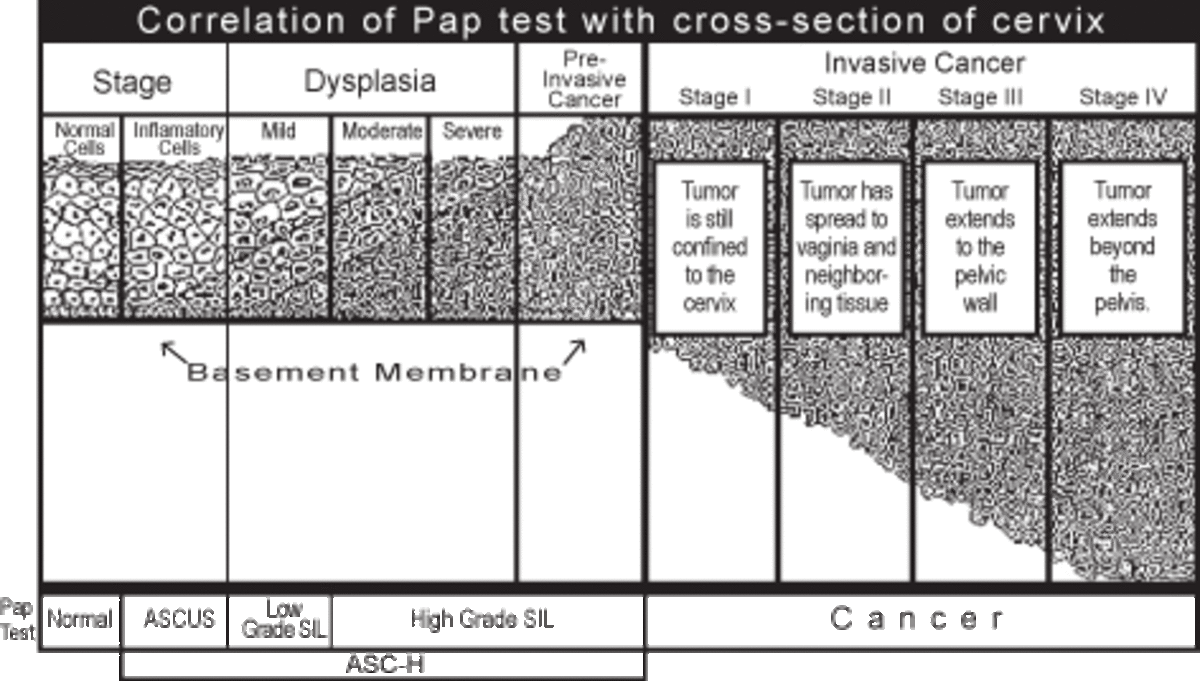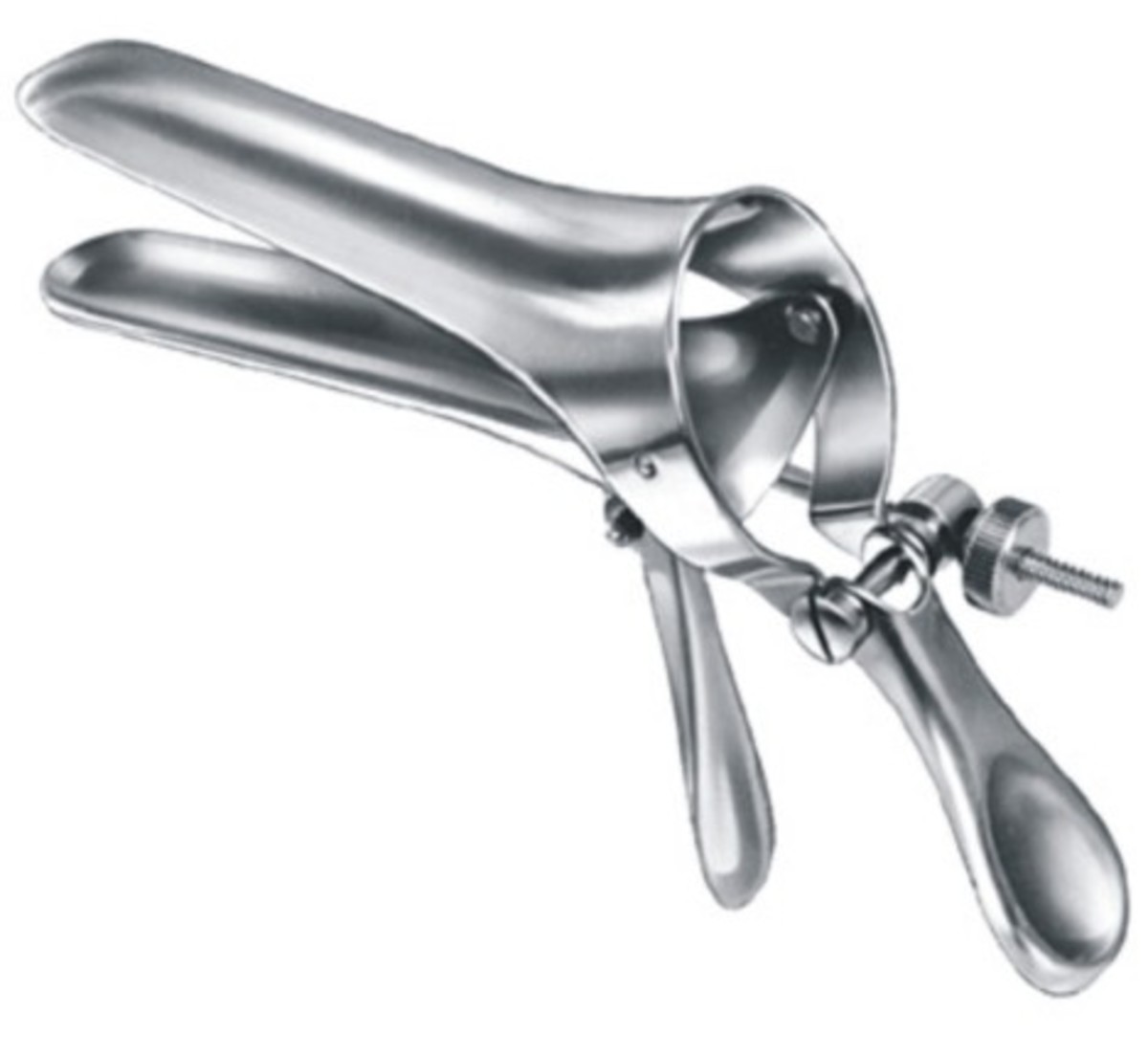Diagnosed With Cervical Precancer
I want to be very clear that I am not a medical professional. If you are looking for big words and super-scientific terminology this is not the page for you. I am a regular person and will speak in everyday language. Also, if you have concerns please talk to a medical professional and never, ever, ever substitute what you read on the Internet, here or elsewhere, for actual medical advice.
I've always been healthy. At age 43 I've never had a serious illness or injury. I'm normal weight, don't abuse alcohol, take precautions with the sun and other things that can damage the body, blah blah blah. In short, I was pretty normal.
As far as women's health goes I always got a regular pap smear and mammogram. Each time I went in I was confident there was nothing wrong, and there never was, until a few weeks ago. I had been in for my yearly pelvic exam/pap smear. Where I live you receive a letter in the mail with the results. This time the letter said I had to go back.
I got scared. My friends told me not to worry, that it was probably a faulty test and I'd be fine. When I arrived at the doctors office I was expecting them to perform another pelvic exam. Within a few minutes the doctor started talking about slicing off part of my cervix to be tested. I was shocked! I asked him why and he said it was normal procedure when a pap smear came back that showed cervical precancer. I had no idea I had it or even really what that meant.

Why Are Pap Smears Important?
I don't think I know anyone that enjoys a pelvic exam but they are critically important and something you absolutely must do. You want to catch cellular changes in your cervix as early as possible and in the very begining they are impossible to detect on your own.
This is why you get a pap smear every year. The pap smear is simply to determine whether the cells in your cervix are normal or not. For a long time I, like a lot of women, thought it was to test for any type of cancer in a womans reproductive system, but it's not, it's to check for cervical cell abnormalities and that's it.
When these abnormalities are present it could be from a few different things. Bacteria, yeast, menopause and HPV infection can all result in abnormal results in your test. You may have cervical precancer cells. If there are any abnormalities your doctor will schedule a visit to discuss it with you.
HPV vaccinations
What do you think?
What is HPV?
And how does it relate to cervical cancer?
Human papillomavirus (HPV) is a virus that can be transmitted sexually (orally or via genital contact). I must emphasize this is nothing to be embarrased about and no one should ever judge you if you have HPV! There are varying estimates of how many people contract an HPV virus, but the numbers that come up most often in my research is that if you are sexually active you have a 75-90% chance of contracting HPV in your lifetime. It doesn't matter if you've been with 1 person or 23,000 people (men or women). The odds are that you have been or will be exposed to it.
There are several strains of HPV. Over 100 actually. As far as cervical cancer is concerned the number of HPV strains that cause cervical cancer is very small, only two of them. Most HPV strains go away on their own, the ones you need to be concerned about are the two that can cause cervical cancer.
There is now a vaccine for HPV. I am not here to say whether or not you should get it. I wish I had but all vaccines should be an individual choice.

Tests Performed After an Abnormal Pap Smear
After you have a pap smear that shows abnormal cells your doctor will test to see what level of precancer you have and how much of your cervix is affected. There are a few ways this can happen.
Colposcopy
This procedure takes about 10-20 minutes and can be done out-patient at your doctor's office. You be required to have your feet up in the stirrups. The doctor will place a speculum in your vagina so your cervix is visible to them. The doctor will shine a bright light in your vagina and use a special magnifying instrument called a colposcope to view your cervix. The doctor will cleanse the area then place a solution on your cervix that reacts with the affected cells so they can become visible to the doctor. This can tingle a bit. If your doctor finds suspicious areas they will perform a biopsy.
Biopsy
During this procedure your doctor will use a very sharp instrument to remove a tiny bit of tissue to send to the lab. I don't want to scare you but I swear I saw scissors, after that I just looked at the ceiling. There are two kinds of biopsies that can happen at this point, a cervical biopsy and a vaginal biopsy. A cervical biopsy isn't painful, but a vaginal biopsy can be so your doctor may use a bit of anesthetic.
Most women resume normal activities the same or next day. It is recommended that you do not engage in sexual intercourse for a week or so (you won't want to anyway). There may be some bleeding and make sure to use a pad instead of a tampon. I had very little bleeding. You may experience pain in your vagina &/or vulva for a couple of days (things do get stretched a bit during the procedure). It doesn't hurt but you are aware of it. There may be a bit of dark discharge. If you experience extended bleeding, abnormal discharge or cramping contact your doctor as these could be signs of infection.
The Different Stages of Cervical Precancer
Your biopsy will be sent to a lab for testing. Your doctor will share the results with you.
Cervical dysplasia is the real name for cervical precancer. There are three different stages of cervical precancer. The stage of precancer you have is determined by how much of the lining of your cervix is affected.
* Mild dysplasia in which about a third of the lining of your cervix is affected.
* Moderate dysplasia in which about two thirds of the lining of your cervix is affected.
* Severe dysplasia in which more than two thirds of the lining of your cervix is affected.
Risk Factors for Cervical Dysplasia/Cervical Precancer
Risk Factors for Cervical Dysplasia/Cervical Precancer
There have been several risk factors identified for cervical precancer. Among them are:
* Being exposed to a high risk strain of HPV
* Smoking
* Hormone types of birth control
* Many sexual partners &/or partners who have been with many people
* Early first sexual intercourse experience
* Pregnancy before the age of 20
* Suffering from conditions that affect the immune system
How Do They Treat Cervical Precancer?
This will really depend on which stage you are at, your age and your overall gynecological health. Cervical cancer typically develops very slowly. If you have pap smears every year they should detect precancerous cells very early.
note: Once cervical dysplasia is treated you can't just forget about it. It may come back... unless you have your cervix removed.
After my colposcopy and biopsy I asked a friend who teaches this very subject at a major university exactly what the heck was going on and what could I expect. His first words were "No need to panic." He then went on to list some types of treatment, including:
Laser treatment
In this procedure the doctor will use a tiny laser to vaporize the affected cells. The doctor will use a colposcope again to be very accurate in zapping the bad cells. Since the cells are vaporized there are no dead cells left behind which leads to a faster recovery. Lasers, of course, can be an expensive tool for a gynocologist to have so many don't. This procedure may be performed at your doctor's office if a laser is present but you may have to go to a hospital.
Cone biopsy
When a doctor performs a cone biopsy they remove a cone-shaped area of the surface of your cervix which removes the affected cells. This procedure may also be done in the diagnostic phase if your doctor deems it appropriate. It can be performed with a laser or conventional surgical instruments and will most likely happen at a hospital. In some cases a cone biopsy may interfere with future pregnancies. Be sure to discuss everything with your doctor.
Loop excision
Also called a LLETZ or a LEEP, a loop excision is performed by using a very tiny electrified wire to remove the affected area of the cervix. This procedure can be done as a diagnostic tool after the initial colposcopy effectively eliminating the wait for diagnosis since the cells have been removed. Many women choose to wait until the results of the biopsy come back to decide which treatment to get but a number of women choose this procedure instead of waiting. A local anesthetic will be used and there may be mild discomfort.
Cryotherapy
Cryotherapy treatment is placing a probe against the cervix which cools it to sub-zero temperatures. The affected cells are damaged by the cold and slough off over the next month in a watery discharge. Something to consider about cryotherapy is the fact that the depth can not be precisely controlled so some affected cells may be left behind. This typically is not an issue with mild to moderate dysplasia but can be problematic if you have severe dysplasia.
Hysterectomy
If you know you do not want to have any (or more) children you may consider the option of a hysterectomy. It is rare that a doctor will recommend this procedure for cervical precancer but it is always an option you have. It is a major surgical procedure but has the lowest recurrence rate of any treatment. You will still have to get pap smears as it is possible the dysplasia can come back in your vagina.
I am not going to recommend which type of procedure you should have. That is between you and your doctor. Make sure you fully understand what is involved in the procedure you choose, possible negative consequences, physical changes, etc before you decide.

A Hug From Me
If you are diagnosed with cervical precancer, I get it, it's really freakin' scary. As I said above I had no idea there was any problem when I went to the doctor and within 10 minutes of arriving I was undergoing a colposcopy and biopsy.
Later at home after it all sunk in I cried, in fact I cried so much that night my face looked like a marshmallow the next day. The doctor had told me it wasn't cancer in the office but I couldn't stop thinking about what if it was and how much time did I have to treat the precancer before it became real cancer and I had so many questions.
But like my friend who teaches this stuff at university level said: there's no need to panic, and I believe him.
Hopefully this page has set your mind at ease a bit. Hugs!









